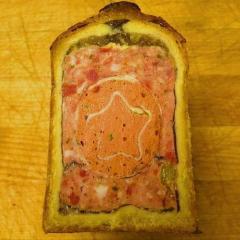13 minutes ago, FeChef said:Sorry if i am not understanding your answer. I don't see how a fine mist ( spritz ) of sugar and amino acids which will quickly evaporate shortly after it hits the meats surface with temps of 250F+.
I am really trying to get you there: please read this explanation on the reverse sear technique to understand how your desired conditions will affect the surface chemistry of your roast/chicken breast/tofu cube …
https://www.seriouseats.com/reverse-seared-steak-recipe
TL;DR:
Moral of the story: Moisture is the biggest enemy of a good sear, so any process that can reduce the amount of surface moisture on a steak is going to improve how well it browns and crisps—and, by extension, minimize the amount of time it spends in the pan, thus minimizing the amount of overcooked meat underneath. It's a strange irony that to get the moistest possible results, you should start with the driest possible steak.




